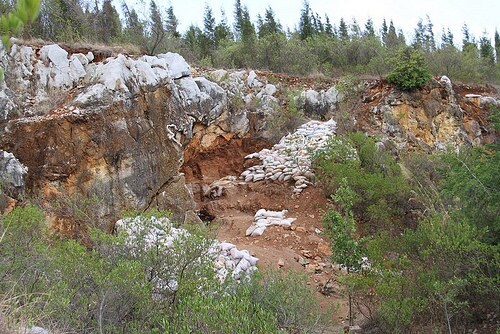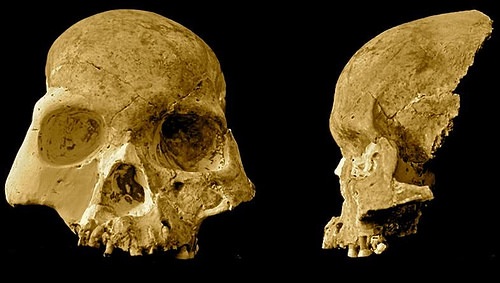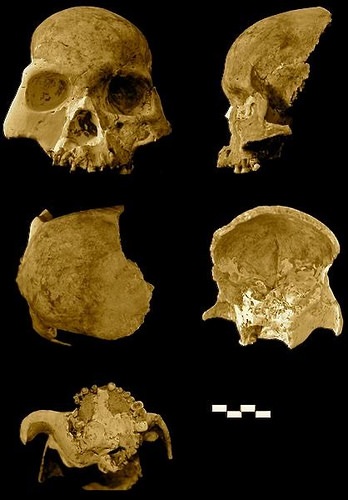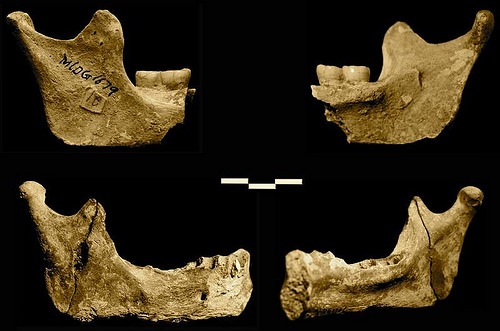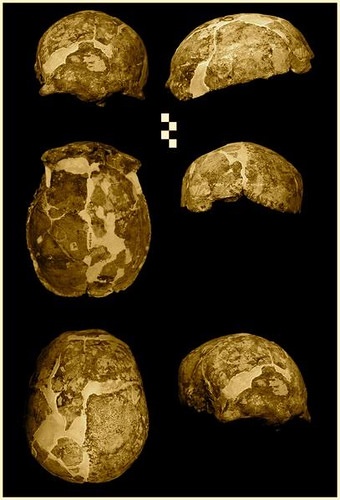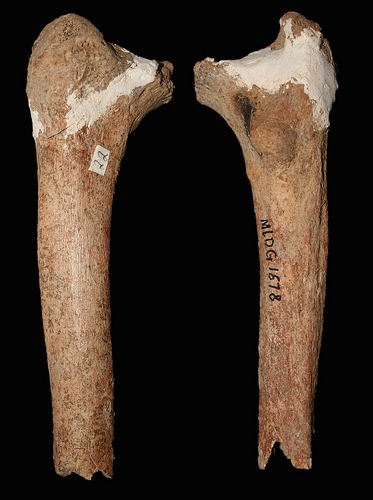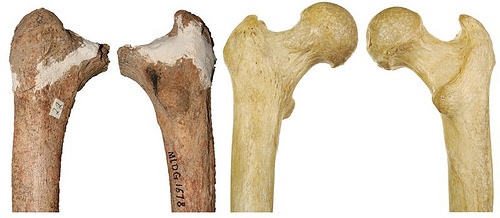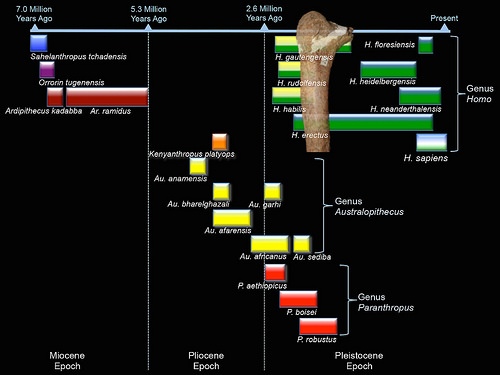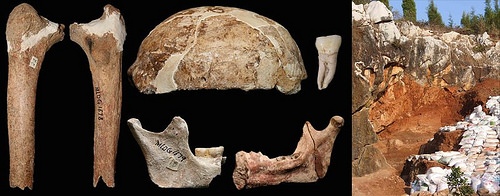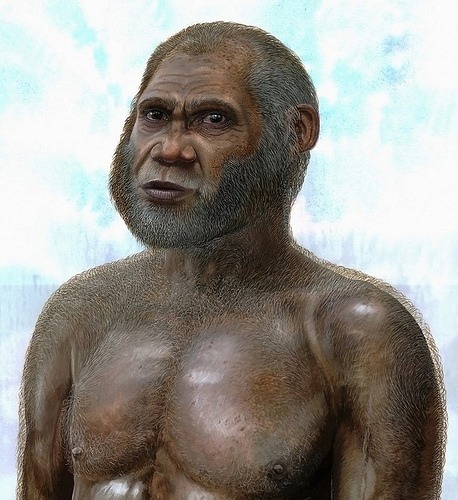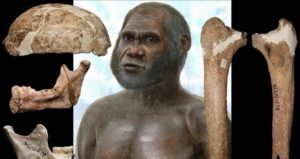
It was in 1989 when miners, quarrying limestone in the Maludong Cave near the city of Mengzi in southwest China’s Yunnan Province, stumbled across a cave with some curious fossils. The cave became known as Red Deer Cave, because of the fossils of giant red deer subsequently excavated at the site. But the most curious fossils discovered at the site appeared to be those of humans. Archaeologists stored these fossils away and they remained unexamined for nearly two decades. They languished in obscurity. That is, until 2008, when an international team consisting of scientists from Chinese and Australian institutions began to study them in earnest.
What the new team uncovered in their analyses would prove to be nothing less than extraordinary. Led by Associate Professor Darren Curnoe of the University of New South Wales, Australia, and Professor Ji Xueping of the Yunnan Institute of Cultural Relics and Archaeology, the team identified skeletal elements of an archaic human, represented by three individuals, who sojourned in Red Deer Cave between 14,500 and 11,500 years ago. They knew the date range based on radiocarbon dating of charcoal deposits within the cave. Also present were stone tools. Whoever they were, they controlled fire and used it to process and cook the deer. Curnoe and colleagues also examined evidence of another archaic human whose remains, consisting of a similar partial skeleton found in 1979 in a cave near the village of Longlin in the neighboring Guangxi Zhuang Autonomous Region, appeared to exhibit similar characteristics.
It wasn’t altogether unique to find fossils of archaic humans in these parts. But what Curnoe and his colleagues found most noteworthy about these archaic human fossils was their unusual combination of primitive and modern features, coupled with the late date range—a time almost exclusively attributed to the presence of anatomically modern humans (AMH). All other species of human, at least in these regions of China, were thought to have gone extinct tens of thousands of years earlier. The finds harkened back to the sensational discovery made in 2003 on the island of Flores in Indonesia, where scientists recovered and identified skeletal remains of another unusual species of human with archaic features—Homo floresiensis, popularly known as the “hobbit”. That human, determined to have occupied the site possibly as late as only 12,000 years ago, featured a very small (average 3 feet tall) body and small cranium or brain capacity, and a mosaic of other features, including a Homo erectus-like skull with a chinless mandible. The Red Deer Cave finds, on the other hand, featured an altogether different mosaic of anatomical features, decidedly different than Homo floresiensis and any other known species of human in the paleontological record. This species sported long, tall, broad frontal brain lobes much like modern humans, but they also featured more primitive characteristics such as a smaller brain capacity, thick skull bones, a prominent brow ridge, a jutting jaw that lacked a chin, a flat upper face with a broad nose, and large molars. Other features were unique to the Red Deer Cave specimen, shared by neither archaic or modern humans, such as a very curved forehead bone, very broad eye sockets and very flat, flaring cheeks. “In short,” Curnoe told a LiveScience reporter, “they’re anatomically unique among all members of the human evolutionary tree.”*
The findings and their implications, from the very beginning, have divided the scientific community.
________________________________________________
The Red Deer Cave (Maludong) was discovered during quarrying work and was excavated in 1989 (Credit: Ji Xueping & Darren Curnoe).
____________________________________________________________________
Above and below: The Longlin 1 partial skull found in Longlin Cave in the Guangxi Zhuang region of China. Curnoe, D.; Xueping, J.; Herries, A. I. R.; Kanning, B.; Taçon, P. S. C.; Zhende, B.; Fink, D.; Yunsheng, Z.
_________________________________________________________________
__________________________________________________________________
Maludong mandibles MLDG 1679 (left) and MLDG 1706 (right) (scale bar = 1 cm). Curnoe, D.; Xueping, J.; Herries, A. I. R.; Kanning, B.; Taçon, P. S. C.; Zhende, B.; Fink, D.; Yunsheng, Z.
____________________________________________________________________
Maludong 1704 skullcap (each bar = 1 cm) Curnoe, D.; Xueping, J.; Herries, A. I. R.; Kanning, B.; Taçon, P. S. C.; Zhende, B.; Fink, D.; Yunsheng, Z.
_____________________________________________________________________
Illumination in the Thigh
Now, more than 25 years later, Curnoe and Ji Xueping’s scientific team has added more grist to the developing story of these enigmatic human remains. An associated 14,000-year-old partial femur (thigh bone) sample from the site laid unstudied until recently, when they conducted CT scans and took bone and body mass measurements, analyzing them with a range of statistical techniques and data sets. Their findings revealed that the bone resembles equivalent fossils belonging to some of the earliest known members of the Homo genus, the evolutionary line that eventually leads to modern humans. It closely matched, according to the investigators, those from species like Homo habilis and early Homo erectus, pre-modern hominins, the remains of which have been dated to as much as 1.5+ million years ago. The first traces of Homo habilis were discovered and identified by Luis and Mary Leakey at Olduvai Gorge in Tanzania, a find that, at the time, revolutionized the thinking on human evolution. Fossils of Homo erectus, considered to be a more advanced species on the human evolution spectrum, and another revolutionary development, were first discovered by Eugene Dubois in 1891 on the island of Java in Indonesia. Many other Homo erectus finds have been recovered in both Africa and Eurasia.
More specifically, like the primitive species Homo habilis, the Maludong thigh bone is very small; the shaft is narrow, with the outer layer of the shaft (or cortex) very thin; the walls of the shaft are reinforced (or buttressed) in areas of high strain; the femur neck is long; and the place of muscle attachment for the primary flexor muscle of the hip is very large and faces significantly backwards.
“Taken together, these features suggest the Maludong individual walked in a way that was different from how modern humans move,” Curnoe said.
With a reconstructed body mass of only 50 kilograms, the individual was very small by pre-modern and Ice Age human standards.
“We published our findings on the skull bones first because we thought they’d be the most revealing, but we were amazed by our studies of the thigh bone, which showed it to be much more primitive than the skulls seem to be,” Professor Ji said.
The latest study, now published in the journal PLOS ONE in December, 2015, confirmed that some of the fossil remains from Maludong represent a mysterious pre-modern species.
_________________________________________________
The recently described pre-modern thigh bone from the Red Deer Cave people of Southwest China (Credit: Darren Curnoe & Ji Xueping).
_____________________________________________________________
Red Deer Cave people thigh bone compared with a modern human (not to scale; Credit: Darren Curnoe, Ji Xueping & Getty Images).
___________________________________________________________________
Human evolution timeline showing where the Maludong thigh probably fits (Credit: Darren Curnoe & Ji Xueping).
______________________________________________________________________
Human remains from the Red Deer Cave people (left, newly described thigh bone; middle, skull bones and tooth) and the Maludong fossil site (right) (Credit: Darren Curnoe & Ji Xueping).
______________________________________________________
The Implications
The unusually primitive nature of the bones, coupled with their relatively young age, has raised some startling implications—and this discovery is expected to be controversial because, until now, it had been thought that the youngest pre-modern humans on mainland Eurasia – the Neanderthals of Europe and West Asia, and the ‘Denisovans’ of southern Siberia – died out about 40,000 years ago, soon after modern humans entered the region. The new find shows that at least one pre-modern species overlapped in time with modern humans in mainland East Asia for tens of thousands of years.
“The Maludong individual might represent a relic, tropically adapted, pre-modern population that survived relatively late in the biogeographically complex region of southwest China,” reported Curnoe, Ji and colleagues. “It is intriguing that such a primitive looking species could have survived at Maludong until near the end of the Ice Age, until about 14,000 years ago. Yunnan Province in southwest China is a remarkable place with a very complex topography resulting from the uplift of the Himalayan Mountains (Qinghai Tibetan Plateau) and the building up of the Indochina block due to plate tectonics. The result is that it has a highly varied and highly unusual set of plant and animal communities and species, with many having persisted in isolation for hundreds of thousands or millions of years……the region around Maludong is also biogeographically on the northern edge of tropical Southeast Asia, and at the time the Maludong cave deposit was formed, it would have been warmer and wetter than today.”** Adds Curnoe: “This is exciting because it shows the bones from Maludong, after 25 years of neglect, still have an incredible story to tell. There seems to have been a diversity of different kinds of human living until very recently in southwest China.”
Do the Maludong specimens represent an entirely new species of archaic human?
Curnoe and colleagues are guarded about assigning the finds to a new species at present. “It is certainly possible that the Maludong femur represents a new species,” they report. “The problem at present is that there simply aren’t many pre-modern femora from East Asia with which to compare the Maludong specimen. It may even be that there were different species living on mainland East Asia during the last Ice Age, from what we see in Europe or Africa at the time…..[but] we can’t narrow down just yet which species the Maludong bone belongs to, other than to state that it strongly resembles early pre-modern groups like Homo habilis.”**
_____________________________________________
Artist’s reconstruction of a Red Deer Cave man (Credit: Peter Schouten).
____________________________________________________________
* “Mysterious Chines Fossils May Be New Human Species,” by Charles Q. Choi, Live Science Contributor, March 14, 2012
**From the subject University of South Wales Q&A Media press release.
Some content within this article was adapted and edited from the subject University of South Wales press release, entitled ‘Red Deer Cave people’ bone points to mysterious species of pre-modern human.
____________________________________________________________
In addition, the latest Popular Archaeology ebook is now available.
______________________________________________
Travel and learn with Far Horizons.
____________________________________________
This richly illustrated issue includes the following stories: Two remarkable discoveries that are shedding light on human beginnings in Africa; a traveling exhibit and an archaeological site that show how knowledge is more valuable than gold; a Spanish cave and a unique burial that are offering a tantalizing glimpse on the lives of Ice Age hunter-gatherers in Europe; the stunning visual reconstruction of an ancient Roman town; enlightening new finds at a remarkably well-preserved site of ancient Hellenistic-Roman culture overlooking the Sea of Galilee; rare finds that are shedding light on occult practices among ancient Greeks in Sicily; and an overview of the overwhelmingly rich archaeological heritage of Britain. Find it on Amazon.com.

